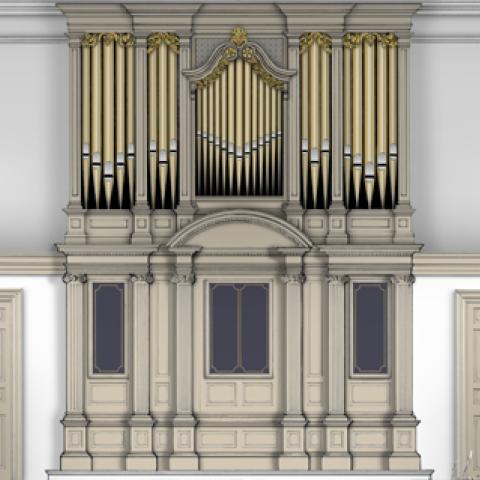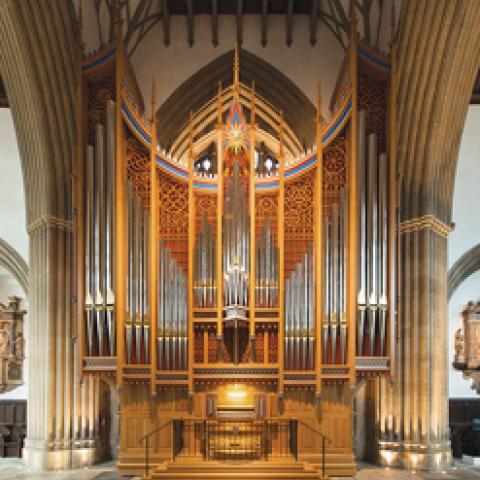
Dobson Pipe Organ Builders, Ltd., of Lake City, Iowa, has been chosen to build its Opus 93 for St. Thomas Episcopal Church, Fifth Avenue, New York City, New York. The Gothic edifice, the final collaboration between Ralph Adams Cram and Bertram Grosvenor Goodhue, was completed in 1913, and a year-long celebration of its centennial was completed earlier this year. The Ernest M. Skinner Company installed its Opus 205, a four-manual organ of 67 stops that has been rebuilt and altered considerably throughout its history.
The new four-manual, 100-stop instrument will be named the “Irene D. and William R. Miller Chancel Organ in Honor of Dr. John Scott,” organist and director of music of St. Thomas Church since 2004. Goodhue’s organ case from 1913 will be retained, as will the original console shell. A second organ case designed to complement the original will be built to house the Great and Positive divisions, to be located across the chancel from the original case. A few ranks of the present organ will be retained for the new instrument, reworked to fit the new scheme.
Removal of the present organ will begin in June 2016. Installation of the new organ will begin about April 2017, with completion approximately one year later.
For information: www.dobsonorgan.com




